Strap wattle, Candelabra wattle
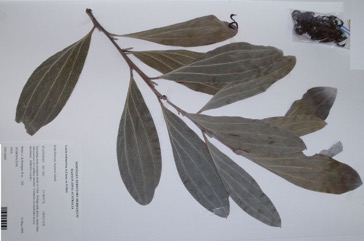
It is a tropical plant. It grows in the Kimberleys in Western Australia and also in Queensland. It is often along the edges of streams. It is a tropical plant but adapts to sub tropical places. It is damaged by drought and frost. It often starts the re-growth when an area is cleared. It needs a sunny position. It grows in areas with annual rainfall between 230-2250 mm. It usually grows below 300 m above sea level. It grows in areas with annual average temperatures between 20°-29°C. It can grow in arid places.
Also known as:
Keo la-sim, Keo to, Silky wattle, Silver-leaved wattle, Soap Bush, Velvet wattle
Synonyms
- Racosperma holosericeum (G. Don) Pedley
- Acacia holosericea A. Cunn. ex G. Don var. glabrata Maiden
- Acacia holosericea A. Cunn. ex G. Don var. multispica Domin
- Acacia holosericea A. Cunn. ex G. Don var. neurocarpa (Hook.) Domin
- Acacia neurocarpa A. Cunn. ex Hook.
Edible Portion
- Seeds, Gum, Roots
Where does Strap wattle grow?
Found in: Asia, Australia, Burkina Faso, India, Indochina, Kenya, Niger, Nigeria, Pacific, Papua New Guinea, PNG, SE Asia, Senegal, Sudan, Vietnam, West Africa
Notes: There are about 1,350 Acacia species. Over 1,000 occur in Australia. Parts of this plant are used as medicine. It is a tetraploid plant sometimes confused with A. colei. Also as Mimosaceae.
Status: It is used for food in Australia but it is not known to be eaten in PNG.
Growing Strap wattle, Candelabra wattle
Cultivation: It is grown from seed. The seed needs treatment to break the hard seed coat. Normally this is by putting the seeds in very hot water and letting the water cool down overnight then planting the seeds immediately. Plants can be pruned to control the straggly growth. To avoid fungal growth on the leaves, spacing and placement should be arranged to allow ample air movement.
Edible Uses: The seeds are eaten. The seeds are ground into flour then cooked as flat bread. The roots of young plants are roasted and eaten. The clear gum can also be eaten.
Production: It is a fast growing plant. Plants flower from June to August and produce pods from July to October. Plants may only last 5-6 years. Seeds are separated from the pods by winnowing in the wind.
Nutrition Info
per 100g edible portion| Edible Part | Energy (kcal) | Protein (g) | Iron (mg) | Vitamin A (ug) | Vitamin c (mg) | Zinc (mg) | % Water |
|---|---|---|---|---|---|---|---|
| Seed | 334 | 24.6 | 8.5 | - | - | 4 | 6.6 |
| Gum | - | - | - | - | - | - | |
| Root | - | - | - | - | - | - |
Strap wattle, Candelabra wattle Photos

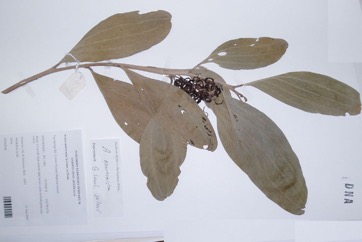
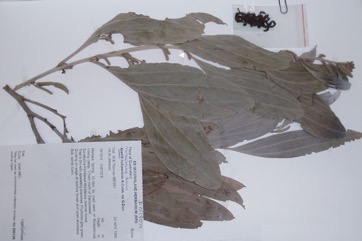
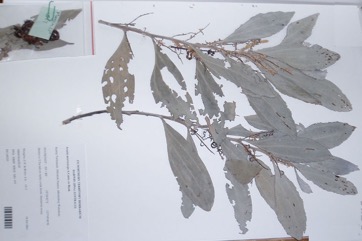
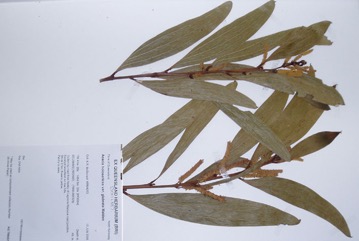
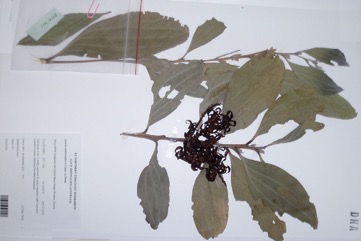
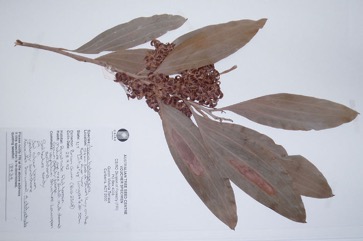
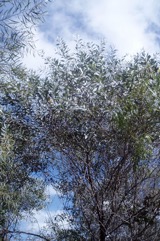
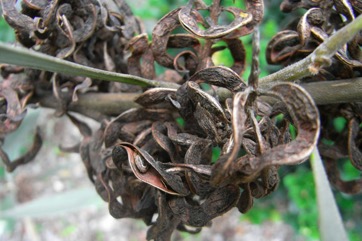
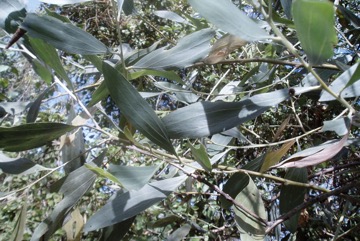
References
Anon., 2003, Native Plants for the Fitzroy basin. Society for Growing Australian Plants Inc. (Rockhampton Branch)
Beasley, J., 2011, Plants of Tropical North Queensland - the compact guide. Footloose publications. p 50
Bindon, P., 1996, Useful Bush Plants. Western Australian Museum. p 16.
Bodkin, F., 1991, Encyclopedia Botanica. Cornstalk publishing, p 20
Brock, J., 1993, Native Plants of Northern Australia, Reed. p 63
Calvert, G., 2010, The Burdekin Delta Tree Guide. Lower Burdekin Landcare Association., Inc., Ayr p 21
Cancilla, D., 2018, Ethnobotanical and Ethnozoological Values Desktop Assessment - Eliwana Project. p 39
Cherikoff V. & Isaacs, J., The Bush Food Handbook. How to gather, grow, process and cook Australian Wild Foods. Ti Tree Press, Australia p 42, 188, 198
Cooper, W. and Cooper, W., 2004, Fruits of the Australian Tropical Rainforest. Nokomis Editions, Victoria, Australia. p 303
Cribb, A.B. & J.W., 1976, Wild Food in Australia, Fontana. p 74, 137
Doran, J.C., & Turnbull, J.W. (Eds), 1997, Australian Trees and Shrubs: species for land rehabilitation and farm plantings in the tropics. ACIAR Monograph No 24. p 160
Dunlop, C.R., Leach, G.J. & Cowie, I.D., 1995, Flora of the Darwin Region. Vol 2. Northern Territory Botanical Bulletin No 20. p 11
Elliot, W.R., & Jones, D.L., 1982, Encyclopedia of Australian Plants suitable for cultivation. Vol 2. Lothian. p 63
Gen. hist. 2:407. 1832
ILDIS Legumes of the World http:www;ildis.org/Legume/Web
Jackes, B.R., 2001, Plants of the Tropics. Rainforest to Heath. An Identification Guide. James Cook University. p 64
Kenneally, K.E., Edinger, D.C., and Willing T., 1996, Broome and Beyond, Plants and People of the Dampier Peninsula, Kimberley, Western Australia. Department of Conservation and Land Management. p 132 (As Acacia neurocarpa)
Lands, M., 1987, Mayi: Some Bush fruits of Dampierland. Magabala Books, Broome West Australia. p 37
Lazarides, M. & Hince, B., 1993, Handbook of Economic Plants of Australia, CSIRO. p 4
Levitt, D., 1981, Plants and people. Aboriginal uses of plants on Groote Eylandt. Australian Institute of Aboriginal Studies, Canberra. p 102
Lim, T. K., 2015, Edible Medicinal and Non Medicinal Plants. Volume 9, Modified Stems, Roots, Bulbs. Springer p 2
Low, T., 1991, Wild Food Plants of Australia. Australian Nature FieldGuide, Angus & Robertson. p 179
Melzer, R. & Plumb, J., 2011, Plants of Capricornia. Belgamba, Rockhampton. p 190
Milson. J., 2000, Trees and Shrubs of north-west Queensland. DPI p 132
Paczkowska, G . & Chapman, A.R., 2000, The Western Australian Flora. A Descriptive Catalogue. Western Australian Herbarium. p 310 and p 317 (As Acacia neurocarpa)
Pennock, A., et al, Australian Dry-zone Acacias for Human Food: Proceedings of a Workshop.
Petheram, R.J. and Kok, B., 2003, Plants of the Kimberley Region of Western Australia. UWA Press p 277
Pham-Hoang Ho, 1999, An Illustrated Flora of Vietnam. Nha Xuat Ban Tre. p 822
Royal Botanic Gardens, Kew (1999). Survey of Economic Plants for Arid and Semi-Arid Lands (SEPASAL) database. Published on the Internet; http://www.rbgkew.org.uk/ceb/sepasal/internet [Accessed 26th April 2011]
Scarth-Johnson, V., 2000, National Treasures. Flowering Plants of Cooktown and Northern Australia. Vera Scarth-Johnson Gallery Association. Cooktown, Australia. p 70
Smith, Nicholas et al. 1993, Ngarinyman Ethnobotany: Aboriginal Plant Use from the Victoria River Area Northern Australia. Northern Territory Botanical Bulletin No 16. Parks and Wildlife Commission of the Northern Territory. p 6, 7.
Townsend, K., 1994, Across the Top. Gardening with Australian Plants in the tropics. Society for Growing Australian Plants, Townsville Branch Inc. p 56
Townsend, K., 1999, Field Guide to Plants of the Dry Tropics. Society for Growing Australian Plants, Townsville Branch Inc. p 94
Verdcourt, B., 1979, Manual of New Guinea Legumes. Botany Bulletin No 11, Division of Botany, Lae, Papua New Guinea. p 169
Wheeler, J.R.(ed.), 1992, Flora of the Kimberley Region. CALM, Western Australian Herbarium, p 309
Wightman, Glenn et al. 1992. Mudburra Ethnobotany: Aboriginal Plant Use from Kulumindini (Elliott) Northern Australia. Northern Territory Botanical Bulletin No 14. Parks and Wildlife Commission of the Northern Territory. p 6, 7.
Wightman, G. & Brown, J., 1994, Jawoyn Plant Identikit, Common Useful Plants in the Katherine Area of Northern Australia. Concervation Commission Northern Territory. p 12
World Checklist of Useful Plant Species 2020. Royal Botanic Gardens, Kew
www.worldagroforestrycentre.org/sea/products/afdbases/af